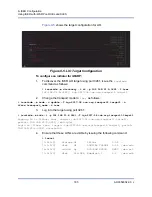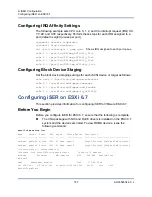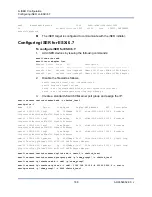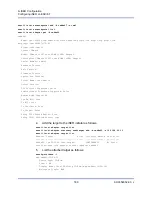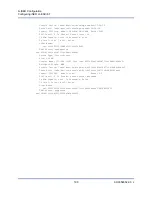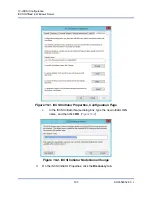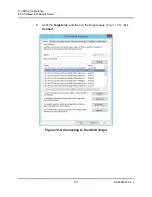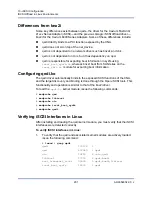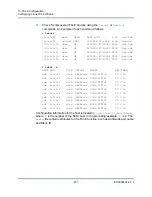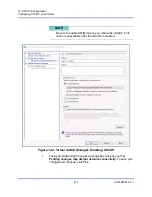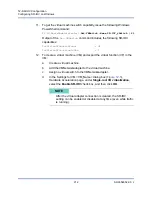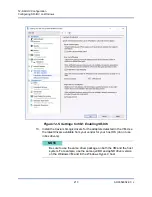
10–iSCSI Configuration
iSCSI Offload in Windows Server
199
AH0054602-00 J
Question:
How do I know that the connection is offloaded?
Answer:
Use Microsoft iSCSI Software Initiator. From a command line, type
oiscsicli sessionlist
. From
Initiator Name
, an iSCSI
offloaded connection will display an entry beginning with
B06BDRV
.
A non-offloaded connection displays an entry beginning with
Root
.
Question:
What configurations should be avoided?
Answer:
The IP address should not be the same as the LAN.
Windows Server 2012 R2, 2016, and 2019 iSCSI Boot
Installation
Windows Server 2012 R2, Windows Server 2016, and Windows Server 2019
support booting and installing in either the offload or non-offload paths. Cavium
requires that you use a slipstream DVD with the latest Cavium QLogic drivers
injected. See
“Injecting (Slipstreaming) Adapter Drivers into Windows Image
.
The following procedure prepares the image for installation and booting in either
the offload or non-offload path.
To set up Windows Server 2012 R2/2016/2019 iSCSI boot:
1.
Remove any local hard drives on the system to be booted (remote system).
2.
Prepare the Windows OS installation media by following the slipstreaming
steps in
“Injecting (Slipstreaming) Adapter Drivers into Windows Image
3.
Load the latest Cavium QLogic iSCSI boot images into the NVRAM of the
adapter.
4.
Configure the iSCSI target to allow a connection from the remote device.
Ensure that the target has sufficient disk space to hold the new OS
installation.
5.
Configure the UEFI HII to set the iSCSI boot type (offload or non-offload),
correct initiator, and target parameters for iSCSI boot.
6.
Save the settings and reboot the system. The remote system should
connect to the iSCSI target and then boot from the DVD-ROM device.
7.
Boot from DVD and begin installation.
8.
Follow the on-screen instructions.
At the window that shows the list of disks available for the installation, the
iSCSI target disk should be visible. This target is a disk connected through
the iSCSI boot protocol and located in the remote iSCSI target.

